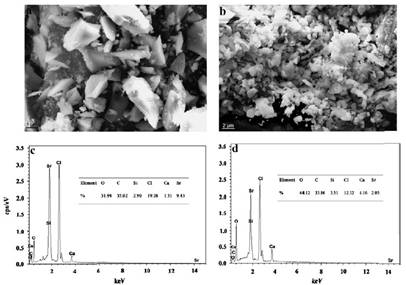
Strontium (Sr) is a naturally occurring alkaline earth metal that is common in marine systems and crustal materials. As its radioactive form (90Sr) is highly toxic, there is an urgent need for remediation of Sr contamination in order to prevent its possible long-term effects on the population in the contaminated regions. Therefore, it is necessary to find a cost effective eco-friendly technique to remove Sr contaminant from aquifer sediments.
Microbially induced calcite precipitation (MICP) is a promising approach to remediate Sr contaminated sites. This technique is active in almost every environment on earth. However, no extensive studies in the past have been performed for bioremediation of Sr contaminated soil or aquifer sediments based on MICP.
Therefore, ACHAL Varenyam et al. evaluated MICP for its potential to remediate strontium from aquifer quartz sand. A Sr resistant urease producing Halomonas sp. was characterized for its potential role in bioremediation. Sr was analyzed from soluble-exchangeable and carbonate bound fractions of quartz sand. Chemical characterization of biomineralization products was done by X-ray Diffraction (XRD) analysis while elucidated by Scanning Electron Microscopy (SEM) coupled with Energy Dispersive X-ray (EDX) analysis.
The result showed that the bacterial strain removed 80% of Sr from soluble-exchangeable fraction of aquifer quartz sand. X-ray diffraction detected calcite, vaterite and aragonite along with calcite-strontianite (SrCO3) solid solution in bioremediated sample with indications that Sr was incorporated into the calcite. Scanning electron micrography coupled with energy-dispersive X-ray further confirmed MICP process in remediation.
This study indicated that MICP sequesters soluble strontium as biominerals and could play an important role in strontium bioremediation from both ecological and greener point of view. The result was published in Chemosphere on October 2012, 89(6): 764-768.

SEM images differentiating (a) control, with (b) bioremediated aquifer quartz sand based on MICP and further EDX analysis of (c) control and (d) bioremediated aquifer quartz sand. (Image by XIEG)

86-10-68597521 (day)
86-10-68597289 (night)

86-10-68511095 (day)
86-10-68512458 (night)

cas_en@cas.cn

52 Sanlihe Rd., Xicheng District,
Beijing, China (100864)

